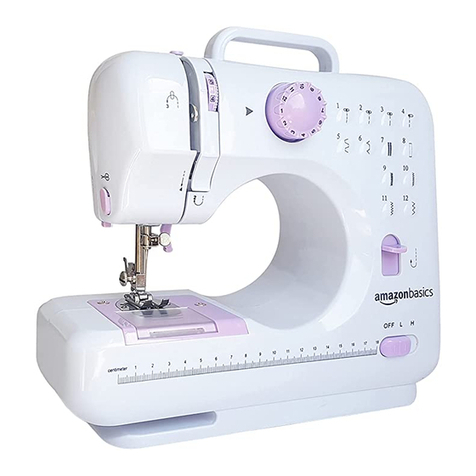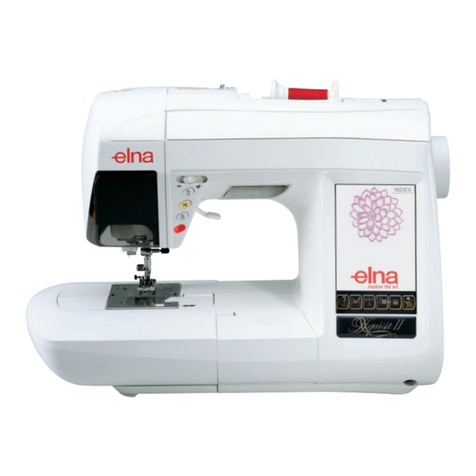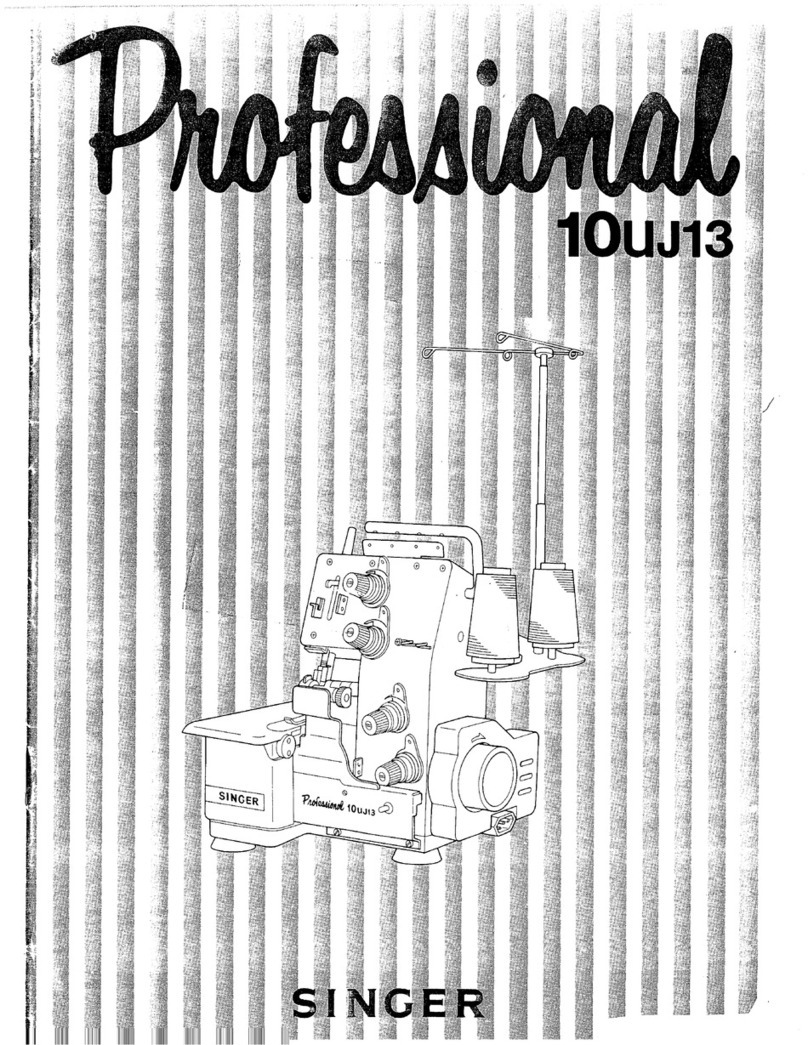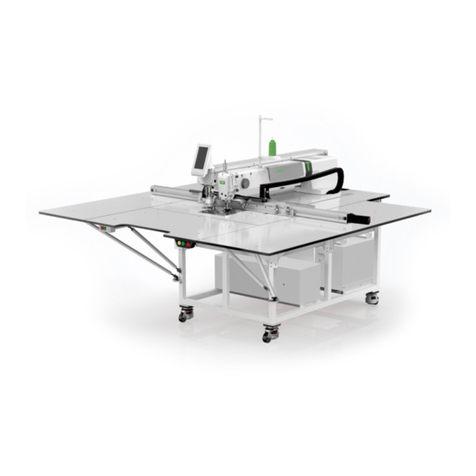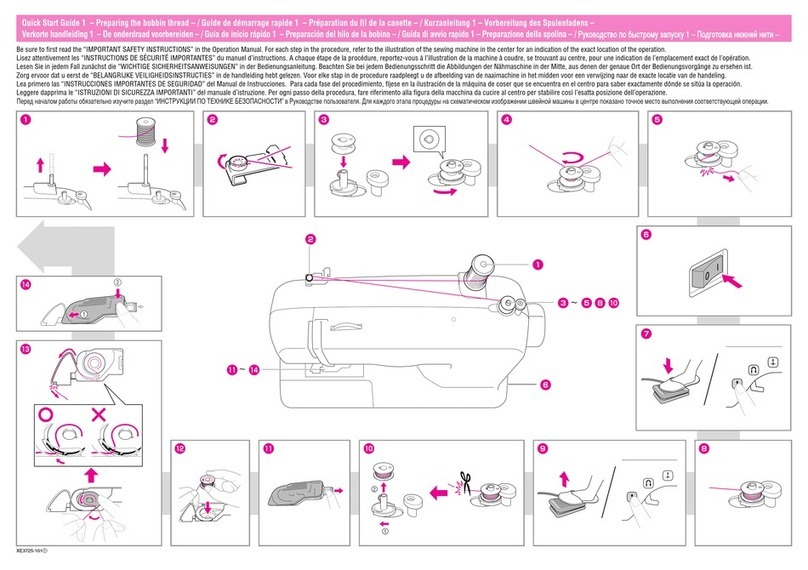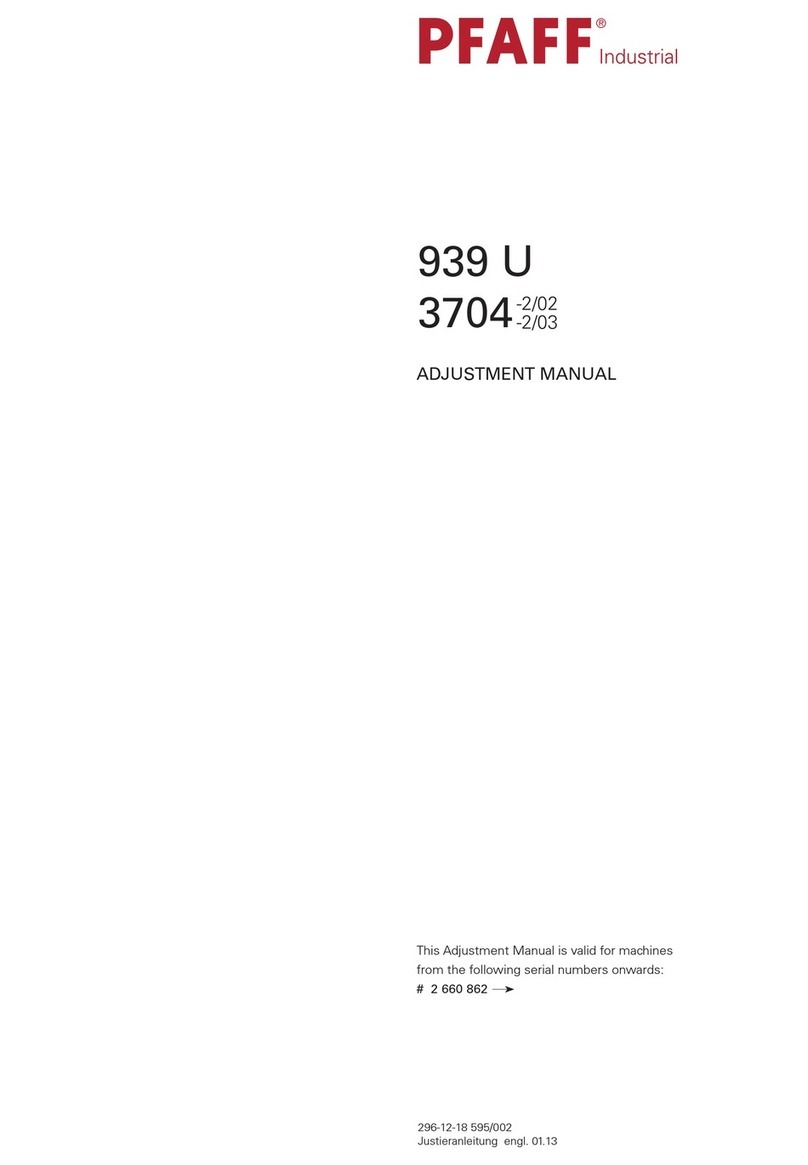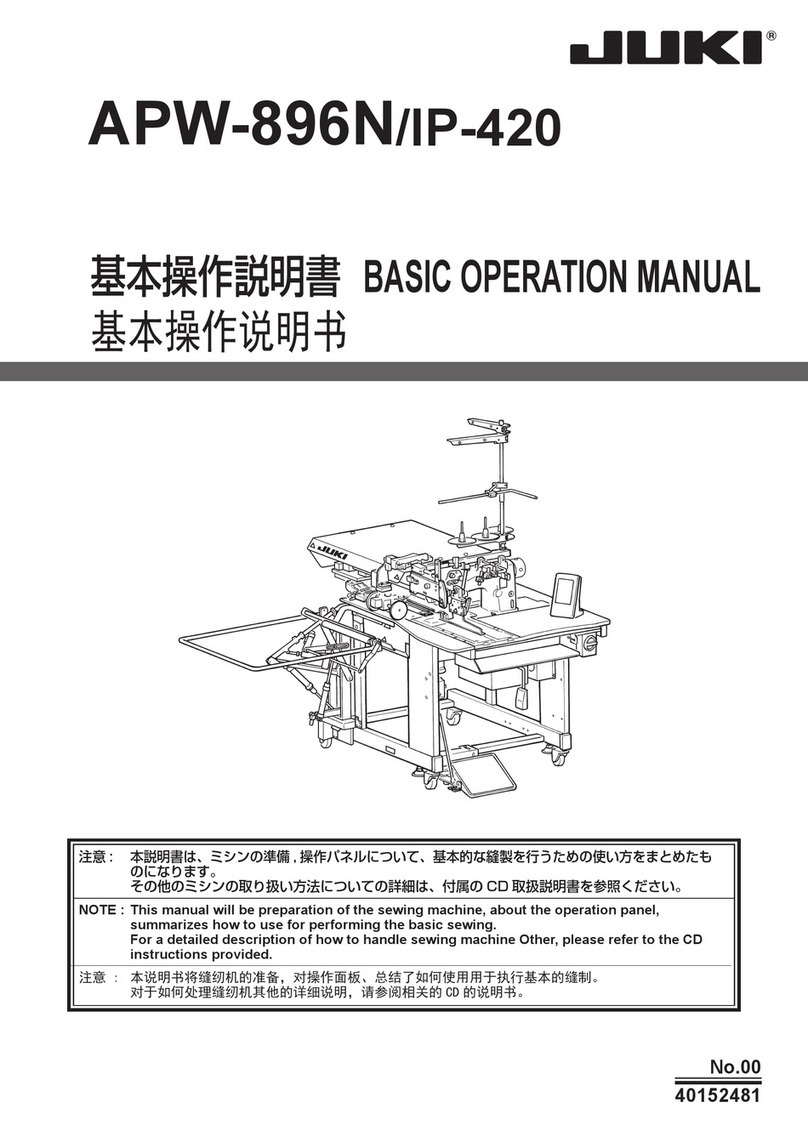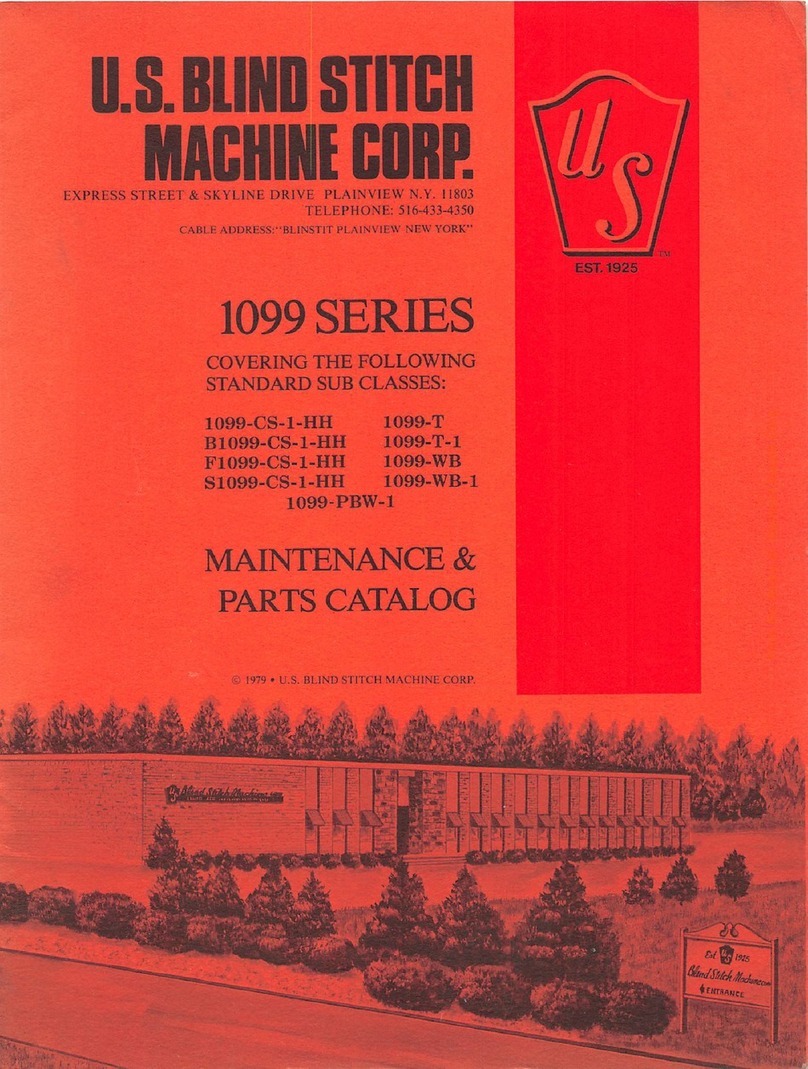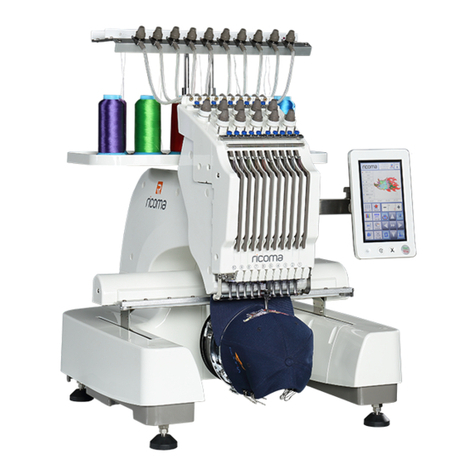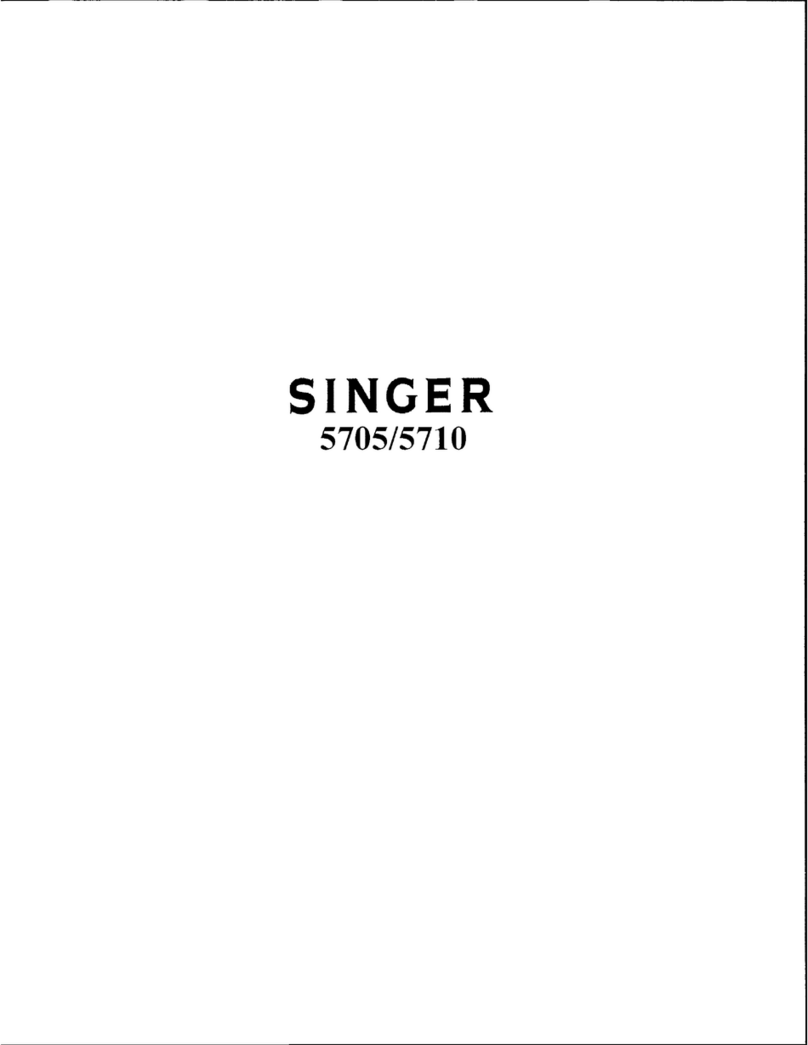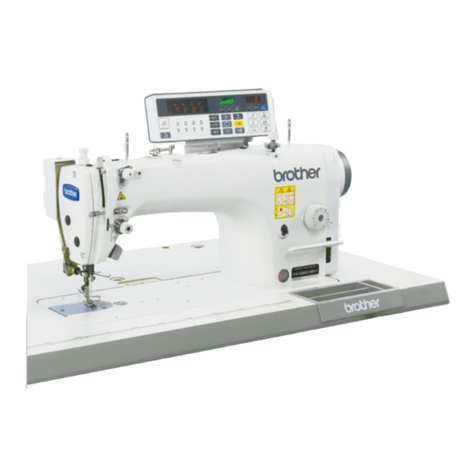EverSewn Celine User manual



SYMBOL INSTRUCTIONS
Raise needle Raise presser foot Lower presser foot

IMPORTANT SAFETY INSTRUCTIONS
IMPORTANT
DANGER
WARNING
When using an electrical machine, basic safety precautions should always be
followed, including the following:
Please read the instruction manual carefully before using this machine.
Keep the instruction manual at a suitable place with the machine and hand it
over if you give the machine to a third party.
When the machine is not in use or left unattended, always disconnect the
machine from the power supply system. Unplug it from the outlet.
To reduce the risk of electric shock:
1. Never leave the machine unattended when it is plugged in.
2. Always unplug this machine from the electric outlet immediately after using
and before cleaning.
3. LED RADIATION: Do not view directly with optical instruments Class.
To reduce the risk of burns, fire, electric shock or injury to persons:
1. The machine mustn't be used by children under 8 or by people with reduced
physical, sensory or mental capabilities or if there is a lack of experience and
knowledge how to operate the machine. Unless they have been given
instruction concerning the use of the machine and the involved risks by a
person who is responsible for their safety.
2. Do not use this machine as a toy. Close attention is necessary when this
machine is used by children, near children or people with reduced sensation.
3. Use this machine only for its intended use as described in this manual. Use
only accessories recommended by the manufacturer.
4. Children should be supervised to ensure that they do not play with the
machine.
5. Never operate this machine if it has a damaged cord or plug, if it is not
working properly, if it has been dropped or damaged, or dropped into water.
Return the machine to the nearest authorized dealer or service centre for
examination, repair, electrical or mechanical adjustment.
6. Never operate the machine with any air openings blocked. Keep ventilation
openings of the machine and the foot control free from accumulation of lint,
dust, and loose cloth.
7. Keep fingers away from all moving parts. Special care is required around the
machine needle.
8. Always use the proper stitch plate. The wrong plate can cause needle
breakage.
9. Do not use bent needles.
I

10. Do not pull or push the fabric while sewing. This can result in needle
breakage.
11. Switch the machine off ("O") when making any adjustments in the needle
area, such as threading or changing the needle, threading the bobbin, or
changing the presser foot, and the like.
12. Always unplug the machine when performing cleaning or maintenance work
such as replacing the sewing light or when making any other user
maintenance adjustments mentioned in the instruction manual (disconnect
the power plug). Cleaning and maintenance work must not be carried out by
children without supervision.
13. Never drop or insert any object into any openings.
14. Use this machine only in dry and protected areas. Never operate the
machine in a damp or wet environment.
15. Do not operate the machine where aerosol spray products are being used or
where oxygen is being administered.
16. To disconnect, turn the power switch to ("O")(off), then remove the plug from
the outlet. Do not unplug by pulling the cord, instead grasp the plug to pull it
from the outlet.
17. If the supply cord of the foot control is damaged, it must be replaced by the
manufacturer or an appropriate service agent or a similar qualified person in
order to avoid endangerment.
18. Never place anything on the foot control.
19. When replacing the light bulb, always use the same type.
20. The machine may only be used in combination with a foot control of the type
C-9000.
21. The sound pressure level during normal operation is lower than 75dB(A).
22. This machine is provided with double insulation (except U.S.A/Canada). Use
only identical replacement parts. See instructions for Servicing of double-
insulated products.
In a double-insulated product, two systems of insulation are provided instead of
grounding. No grounding means is provided on a double-insulated product nor
should a means for grounding be added to the product. Servicing a
doubleinsulated product requires extreme care and knowledge of the system and
should only be done by qualified service personnel. Replacement parts for a
double-insulated product must be identical to those parts in the product. A double
insulated product is marked with the words "DOUBLE INSULATION" or
"DOUBLE INSULATED".
The symbol may also be marked on the product.
SERVICING OF DOUBLEINSULATED PRODUCTS
IMPORTANT SAFETY INSTRUCTIONS
II

III
IMPORTANT SAFETY INSTRUCTIONS
Attention!
Note:
All rights reserved
Environmental protection
- This machine is intended for household use only. If used intensively or commercially, regular
cleaning and especially attentive care is required.
- Signs of wear and tear owing to intensive or commercial use are not covered automatically,
even if they occur within the warranty period. The decision on how to deal with any such cases
rests with the local authorised servicing staff.
If the machine is stored in a cold room, it should be brought to a warm room about one hour
before use.
For technical and product improvement reasons, the machine's features, parts and accessory
are subject to unannounced changes and alterations at any time. The accessory included can
differ from country to country.
Ever Sewn is committed to the protection of the environment. We strive to minimize
the environmental impact of our products by continuously improving product Design
and our technology of manufacturing. Do not dispose of electrical machines as
unsorted municipal waste, use separate collection facilities. Contact your local
government for information regarding the collection systems available.
If electrical machines are disposed of in landfills or dumps, hazardous substances can
leak into the groundwater and get into the food chain, damaging your health and well-
being.
When replacing old machines with new ones, the retailer is legally obligated to take
back your old machine for professional disposal free of charge.
SAVE THESE INSTRUCTIONS!

CONTENTS
PRINCIPAL PARTS OF THE MACHINE
MACHINE CONTROL BUTTONS
LCD SCREEN
PATTERN CHART
ACCESSORIES
CONNECTING THE MACHINE TO THE POWER SOURCE
WINDING THE BOBBIN
INSERTING THE BOBBIN
THREADING THE UPPER THREAD
USING THE NEEDLE THREADER
DRAWING UP THE LOWER THREAD ..................................................
CUTTING THE THREAD
TWO-STEP PRESSER FOOT LIFTER
STARTING SEWING
THREAD TENSION
CHANGING THE PRESSER FOOT
PRESSER FOOT CHART
MATCHING NEEDLE/ FABRIC/ THREAD
REPLACING THE NEEDLE
RAISE OR LOWER FEED DOGS
OPERATION BUTTONS
FUNCTION BUTTONS
MEMORY BUTTONS
SELECTION BUTTONS
SEWING TIPS
...................................................6
.....................................................7-8
Operation buttons (see page 28/29/30) ...............................................7
Function buttons (see page 31/32/33) ................................................8
Memory buttons (see page 34) ......................................................8
Selection buttons (see page 35) .....................................................8
.....................................................................9
..................................................................10
...................................................................11
...................................12
Connecting the machine .........................................................12
..........................................................13-14
Bobbin winding .............................................................13-14
...........................................................15
..................................................16-17
......................................................18
19
.............................................................19
.....................................................20
20
...............................................................21
Start/stop button ...............................................................21
Foot control...................................................................21
................................................................22
.....................................................23
.............................................................24
................................................25
...........................................................26
.......................................................26
27
..........................................................28-30
Start/stop button ...............................................................28
Thread cutter button.............................................................28
Reverse button.................................................................29
Auto-lock button ...............................................................29
Needle up/down position button ...................................................30
...........................................................31-33
Stitch width adjustment button .....................................................31
Stitch length adjustment button .....................................................32
MODE selection button ..........................................................32
Mirror button (see page 64) ......................................................33
...............................................................34
Memory button ................................................................34
Arrow button ..................................................................34
Clear button ..................................................................34
.............................................................35
Direct pattern selection and number buttons ...........................................35
.................................................................36-37
Sewing corners ................................................................36
Reverse ......................................................................36
Freearm.....................................................................36
Installing the extension table.......................................................37
Sewing on heavy fabric ..........................................................37
ADJUSTING PRESSER FOOT PRESSURE................................................
PATTERN BALANCE ADJUSTMENT ....................................................
III

CONTENTS
NEEDLE POSITION AND STITCH LENGTH
ZIGZAG STITCHES
STRETCH STITCHES
OVERCASTING STITCHES
BLIND HEMS
BUTTON SEWING
BUTTONHOLE SEWING
BAR TACK STITCH
EYELET STITCH
DARNING STITCH
ZIPPER INSERTION
NARROW HEMMING
CORDING
SATIN STITCH SEWING
EDGE/QUILTING GUIDE
GATHERING
SMOCKING
FREE MOTION SEWING
WALKING FOOT
FAGOTING ....................................................................
DECORATIVE TOPSTITCHING
SCALLOP STITCH
MIRROR IMAGE
USING THE TWIN NEEDLE
MEMORY
WARNING FUNCTIONS
BUZZER SOUND
MAINTENANCE
TROUBLE SHOOTING GUIDE
..............................................38
................................................................38
................................................................39
...........................................................40
Using the overcasting foot ........................................................40
Using the all purpose foot ........................................................40
....................................................................41
.................................................................42
.........................................................43-46
Making corded buttonholes .......................................................46
.................................................................47
...................................................................48
..............................................................49-50
.............................................................51-52
Inserting a centered zipper ........................................................51
Inserting a lapped zipper .........................................................52
..............................................................53
......................................................................54
Single cording .................................................................54
Triple cording .................................................................54
............................................................55
...........................................................56
.....................................................................57
.....................................................................58
.........................................................59-60
Darning .....................................................................59
Embroidery ...................................................................60
Monogramming ...............................................................60
..................................................................61
62
........................................................62
.................................................................63
Scallop hem ..................................................................63
Scallop edging ................................................................63
..................................................................64
..........................................................65
.....................................................................66-68
Combining patterns or letters ...................................................66-67
Adding patterns or letters .........................................................67
Editing patterns ................................................................67
Clearing patterns or letters ........................................................67
Recalling and sewing the memorized pattern ........................................67-68
............................................................69
Warning animation message display.................................................68
Instruction animation message display ...............................................68
Warning beeping sound..........................................................69
..................................................................70
..................................................................71
Cleaning the screen .............................................................71
Cleaning the sewing machine surface ................................................71
Cleaning the hook ..............................................................71
.....................................................72-73
IV

Operation buttons A
Thread cutter
Face plate
Buttonhole lever
Auto needle threader
Sewing table and
accessory box
Speed limiting
adjustment lever
Selection buttons
D
Bobbin winder spindle
Needle plate cover
Tension dial
Stitch pattern plate clip*
Hole for Auxiliary spool pin
Power cord socket
Handwheel
Main power switch
Foot controller connector
Drop feed lever
PRINCIPAL PARTS OF THE MACHINE
Stitch pattern plate
Presser foot pressure
LCD screen
* The stitch pattern plate clip is in the accessory box.
Bobbin thread guide
Upper thread guide
Horizontal spool pin
Handle
Presser foot lifter
Bobbin winder stopper
Pattern adjustment dial
Function buttons
Function buttons
B
B
CMemory buttons
6

1. Start/stop button
3. Reverse button
4. Auto-lock button
5. Needle up/down position button
Speed limiting adjustment lever
Press this button to start or stop the machine.
Hold down this button to sew stitches in reverse or sew reinforcement stitches at a low speed.
Hold down this button to sew locking stitches immediately or at the end of the current patterns
and automatically stop.
Press this button to move the needle to either up or down position. Needle will be programmed
to stop in selected position until button is pressed again.
6.
Slide this lever to change the sewing speed.
2. Thread cutter button
Press this button after finishing sewing and the machine will trim the threads.
A. Operation buttons (see page 28/29/30)
MACHINE CONTROL BUTTONS
1
6
9
7
2
3
4
5
14
8
13
12
11
10
7

D. Selection buttons (see page 35)
14. Direct pattern selection and number buttons
Instant access to direct pattern or press number buttons of the pattern number to select the
desired pattern.
MACHINE CONTROL BUTTONS
7. Stitch length adjustment buttons
8. Stitch width adjustment buttons
9.
10. Mirror button
Press this button to adjust the length of the stitch.
Press this button to adjust the width of the zigzag stitch.
Press this button to sew a reflection pattern.
Mode selection button
Press this button to select direct mode, utility and decorative pattern mode and block letter
mode.
B. Function buttons (see page 31/32/33)
C. buttonsMemory (see page 34)
11. Memory button
12.
13. Clear button
Press this button to enter or store the created pattern combination in the memory.
If an incorrect pattern is selected or memorized, pressing this button will clear it.
Arrow button
Press the button until the actual stitch number is displayed.
8

LCD SCREEN
Needle down
Auto-stop
Reverse
Pattern mode
Pattern number
Stitch width
Pattern
Stitch length
Number of current unit
Total number of unit
Suggested
presser foot Memory mode
Alphabet mode
Pattern number
Stitch widthStitch length
Pattern
Needle up
Number of current unit
Total number of unit
Auto-stop
Suggested
presser foot
Needle up
Auto-lock
Mirror
Needle position
Reverse
Direct mode
Pattern number
Stitch width
Bobbin winding
Buttonhole lever
Pattern
Stitch length
Suggested
presser foot
Direct Pattern
Pattern
Alphabet
9

PATTERN CHART
Patterns
Patterns-100
The portions marked in gray (on the chart below) show the single unit of each stitch.
1234567890
Direct Patterns-10
29
30
2322 24 25 26 27
28
21 31 32 33 34 35 37 3836 39
40
20
17 19
18
01 03 05 06 07 10 11 12 16
13
02 04 08 09 15
14
49
48
45
41 44
42 43 50
46 47
60 6362 64 65 66
61
00
51 52 53 54 55 57 5856 59
80 81 82 83 84 85
71 72 73 74 75 76 77 78 797067 68 69
92 93 94 95 96 97 98 9986 87 88 89 90 91
Alphabets-100
01 02 03 04 05 06 07 08 09 10
11 12 13 14 15 16 17 18 19 20 21 22 23 24 25 26 27 28 29 30 31 32 33 34 35 36
37 38
39
40 41 42 43 44 45 46 47 48 49 50 51 52 53 54 55 56 57 58 59 60 61 62
89
90 91 92 93 94 95 96 97
63 64
65
66
67
68 69 70 71 72 73 74 75
76
77
78
79
80 81
82
83 84 85 86 87 88
10

020H7A0002 H7A0754210
ACCESSORIES
Optional
M
Cording foot Gathering foot
K
Rolled hem foot
P
Quilting foot Darning/Embroidery foot
Walking foot
Twin needle Sewing machine dust cover Extension table
Standard
T
All purpose foot
E
Overcasting foot
Brush/ Seam ripper
Screwdriver (L & S)
I
Zipper foot
F
Blind hem foot Button sewing foot
D
Buttonhole foot
A
Satin stitch foot
Bobbin (3x)Edge/quilting guide
Spool pin felt
Spool holder
Pack of needles
H
Auxiliary spool pin Soft cover
11

Connecting the machine
Before connecting the power supply, make sure that the voltage and frequency shown on the
machine is conforming with your electrical power.
Place machine on a stable surface.
1. Connect the power line cord to the machine by inserting the 2-hole plug into the power cord
socket.
2. Connect the power line plug to the electric outlet.
3. Turn on the power switch.
4. The sewing lamp will light up when the switch is turned on.
To disconnect, turn the power switch to the off position, then remove plug from outlet.
Caution: Always make sure that the machine is unplugged from power source and the main
switch is on "O" when the machine is not in use and before inserting or removing parts.
Polarized plug information
This appliance has a polarized plug (one blade wider than the other),
to reduce the risk of electrical shock; this plug will fit in a polarized
outlet only one way. If the plug does not fit fully in the outlet, reverse
the plug. If it still does not fit, contact a qualified electrician. Do not
modify the plug in any way.
CONNECTING THE MACHINE TO THE POWER SOURCE
ON
OFF
12

Bobbin winding
WINDING THE BOBBIN
Place the thread and spool holder onto the spool pin.
For larger spools of thread, place the large side of the
spool holder toward the spool. For smaller spools of
thread, place the small side of the spool holder toward
the spool, or use the small spool holder. If the thread
spool has a thread retaining slit, place this end of the
spool toward the right, so the thread doesn't get caught
while winding the bobbin.
1
1
Snap the thread into the thread guide.
2
2
Place the thread end through one of the inner holes in
the bobbin as illustrated and place empty bobbin on
the spindle.
4
4
Push the bobbin to right.
5
5
Wind the thread counter-clockwise around the bobbin
winder tension disks.
3
3
4
1
3
2
10
4
1
3
2
10
13

WINDING THE BOBBIN
Please Note: When the bobbin winder switch is placed on the right, "bobbin winding
position", the machine will not sew and the handwheel will not turn. To start sewing, push the
bobbin winder switch to the left "sewing position".
Hold the thread tail securely in one hand.
Press the Start/stop button or the foot control.
After the bobbin has wound a few turns stop the machine
and cut the thread near the hole of the bobbin. Continue
winding the bobbin until it is full. The motor stops
automatically when the bobbin is full. Stop the machine.
Push the bobbin winder spindle to left.
Cut the thread and then remove the bobbin.
7
9
10
7
8
9
10
6
When the bobbin winder spindle is pushed to the right,
which is the "bobbin winding position", the symbol
" " appears on the LCD screen.
The symbol will disappear from the LCD screen when the
bobbin winder spindle is pushed to the left, which is the
"sewing position".
6
8
14

Attention: Turn power switch to off ("O")
before inserting or removing the bobbin.
When inserting or removing the bobbin,
the needle and presser foot must be fully
raised.
1 Insert the bobbin in the bobbin case with
the thread running in a counterclockwise
direction (arrow).
1
2 Pull the thread through the slit (A).
2
3
Draw
.
With a finger held gently on top of the
bobbin.
the thread at the arrow markings into
the stitch plate thread guide from (A) to (B)
3
4 Pull the thread at the arrow markings into
the stitch plate thread guide from (B) to (C).
To cut off excess thread pull thread back
over the cutting off blade at point (C).
Close the bobbin cover plate.
4
A
A
B
C
B
3
4
2
1
15
INSERTING THE BOBBIN

2
31
4
THREADING THE UPPER THREAD
Please Note: It is important to carry out the threading correctly as by not doing so
several sewing problems could result.
Start by raising the needle to its highest point, and
also raise the presser foot to release the tension discs.
1 Lift up the spool pin. Place the spool of thread on the spool
pin so that the thread comes from the front of the spool,
then place the spool cap at the end of the spool pin.
2 Draw the thread from the spool through the upper
thread guide.
1
2
1
2
6
5
7
8
16

THREADING THE UPPER THREAD
4. Thread the tension module by passing the thread between
the silver discs.
5. Then, down and around the check spring holder.
3 Guide the thread around the thread guide pulling the
thread through the pre-tension spring as illustrated.
5
6
7
3
4
6. At the top of this movement, pass the thread from right to
the left through the slotted eye of the take-up lever and
then downwards again.
7. Pass the thread behind the flat, horizontal thread guide.
Guide the thread through the thread guide located above
the needle.
Pull the end of the thread through the needle from front to
rear, and pull out about 10 cm of thread.
Use the needle threader to thread the needle. (On the next
page.)
3
4
7
6
5
8
8
17
Table of contents
Other EverSewn Sewing Machine manuals
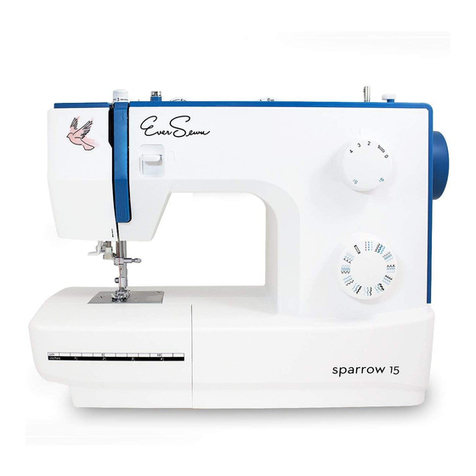
EverSewn
EverSewn sparrow 15 User manual
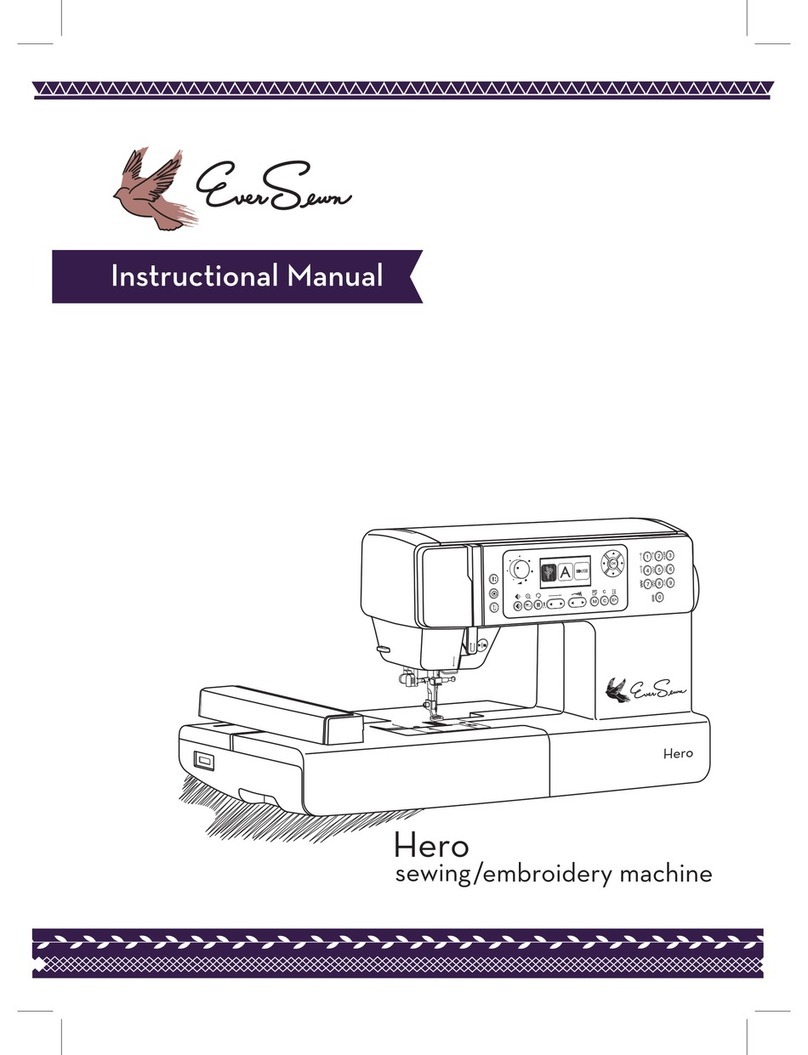
EverSewn
EverSewn Hero User manual
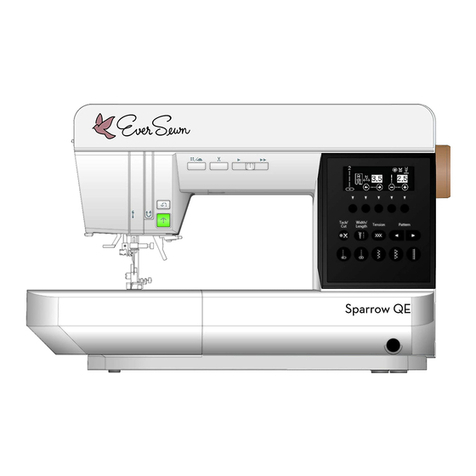
EverSewn
EverSewn Sparrow QE User manual
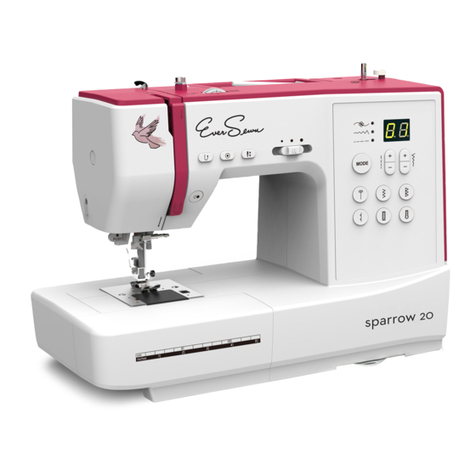
EverSewn
EverSewn sparrow 20 User manual
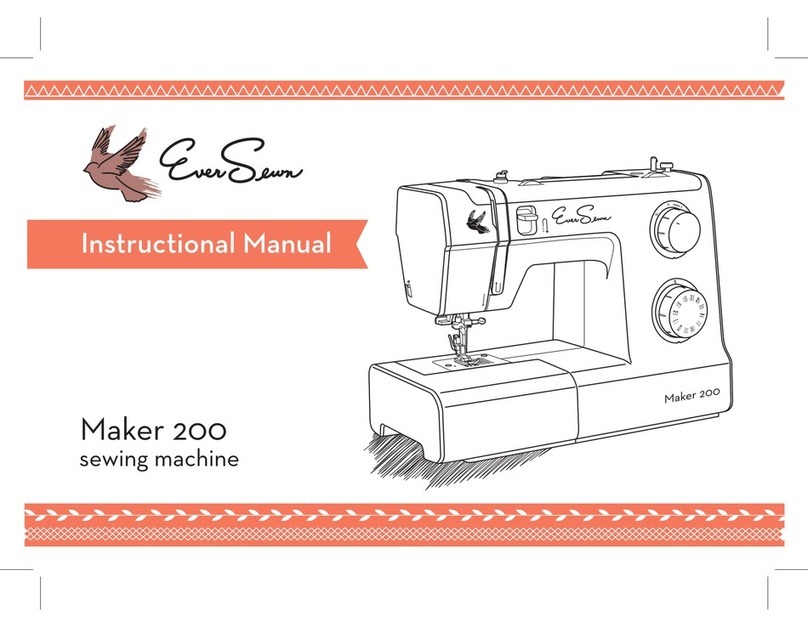
EverSewn
EverSewn Maker 200 User manual
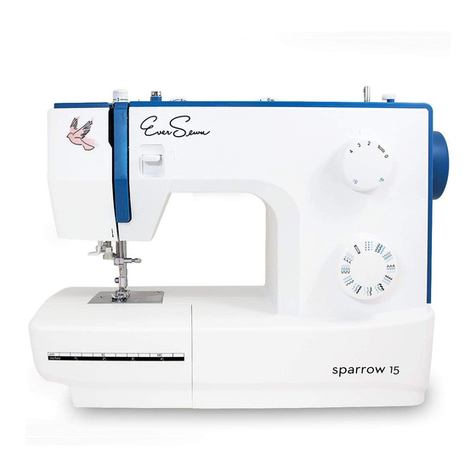
EverSewn
EverSewn sparrow 15 Series Operating instructions
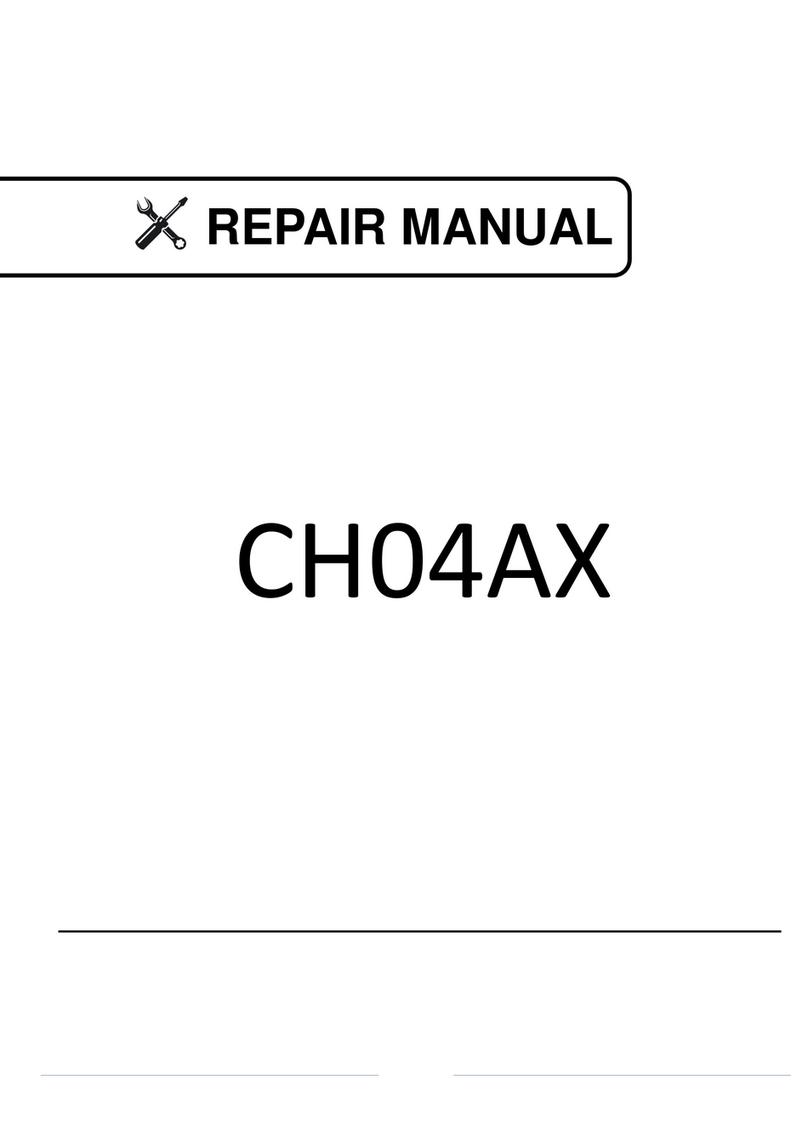
EverSewn
EverSewn CH04AX Operating instructions
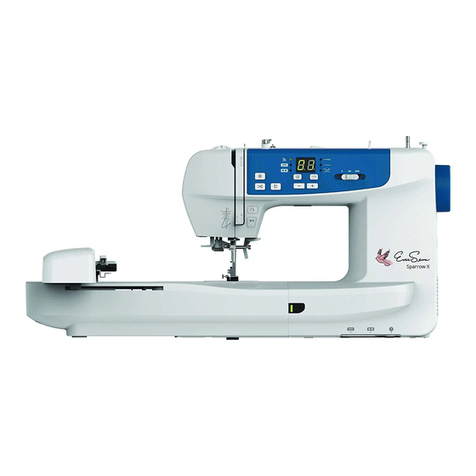
EverSewn
EverSewn Sparrow X User manual


